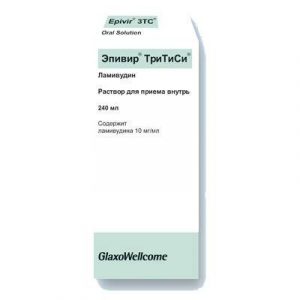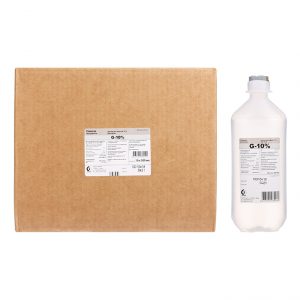Description
Latin name
Oliclinomel N4-550
release form
emulsion for infusion
Packaging
Three-chamber containers 1 l, 6 pcs.
Pharmacological action
Oliklinomel has a compensating deficiency of proteins, fats and carbohydrates, compensating for the deficiency of macro- and micronutrients.
Indications
For parenteral nutrition in adults and children 2 years of age and older, in cases where enteral nutrition is not possible, insufficient or contraindicated.
Contraindications
Hypersensitivity to the components of the drug Oliklinomel, severe renal failure in the absence of the possibility of hemodialysis or hemofiltration, severe liver failure, severe blood clotting, severe hyperlipidemia, hyperglycemia, lactic acidosis, congenital disorders of amino acid metabolism, electrolyte metabolism disorders, increased plasma concentration of one of the electrolytes included in the mixture, pulmonary edema, hyperhydration, decompensated heart failure and hypotonic hydration, unstable conditions (severe post-traumatic conditions decompensated diabetes mellitus, acute phase of hypovolemic shock, acute phase of myocardial infarction, severe metabolic acidosis, severe sepsis, hyperosmolar coma), childhood (up to 2 years)
Caution: for patients with increased plasma osmolarity, adrenal insufficiency, heart failure and pulmonary pathology.
Use during pregnancy and lactation
There are no reliable data on the use of the drug in pregnant and lactating women. In each case, the doctor must assess the ratio of risk and benefit.
Composition
Refined olive oil + refined soybean oil, g (80% + 20%)
Dosage and administration of
IV in the central or peripheral vein.
Dose and duration of administration are determined by the need for parenteral nutrition in each individual patient, depending on his condition.
Adults: The average need for organic nitrogen is 0.16-0.35 g / kg / day (1-2 g of amino acids / kg / day). Energy demand varies depending on the condition of the patient and the intensity of catabolic processes, an average of 25-40 kcal / kg / day.
The maximum daily dose is 40 ml / kg (which is equivalent to 0.88 g of amino acids, 3.2 g of dextrose and 0.8 g of lipids per 1 kg of body weight), i.e. 2800 ml of emulsion for a patient weighing 70 kg.
Children over 2 years of age: The average need for organic nitrogen is 0.35-0.45 g / kg / day (2-3 g of amino acids / kg / day). Energy demand varies depending on the age, condition of the patient and the intensity of catabolic processes, an average of 60-110 kcal / kg / day. The dose depends on the amount of fluid received in the body and the daily need for proteins.
The maximum daily dose is 100 ml / kg (which is equivalent to 2.2 g of amino acids, 8 g of dextrose and 2 g of lipids per 1 kg of body weight).
Do not exceed a dose of 3 g / kg / day of amino acids and / or 17 g / kg / day of dextrose and / or 3 g / kg / day of lipids, except in special cases.
The maximum infusion rate should not exceed 3 ml / kg / h, i.e. no more than 0.06 g of amino acids, 0.24 g of dextrose and 0.06 g of lipids per 1 kg of body weight per hour.
Drug Interactions
Do not administer the drug in parallel with blood products through the same catheter because of the possibility of pseudoagglutination.
Overdose
Symptoms: hypervolemia, acidosis, nausea, vomiting, shivering, electrolyte imbalance. With the introduction of too high doses of dextrose – hyperglycemia, glucosuria, hyperosmolar syndrome. The development of fat overload syndrome is possible.
Treatment: The infusion should be stopped. In severe cases – hemodialysis, hemofiltration or hemodiafiltration.
Storage conditions
At 2 25 ° C (do not freeze).
active substance
amino acids for parenteral nutrition
Terms leave through pharmacies
In retseptu



